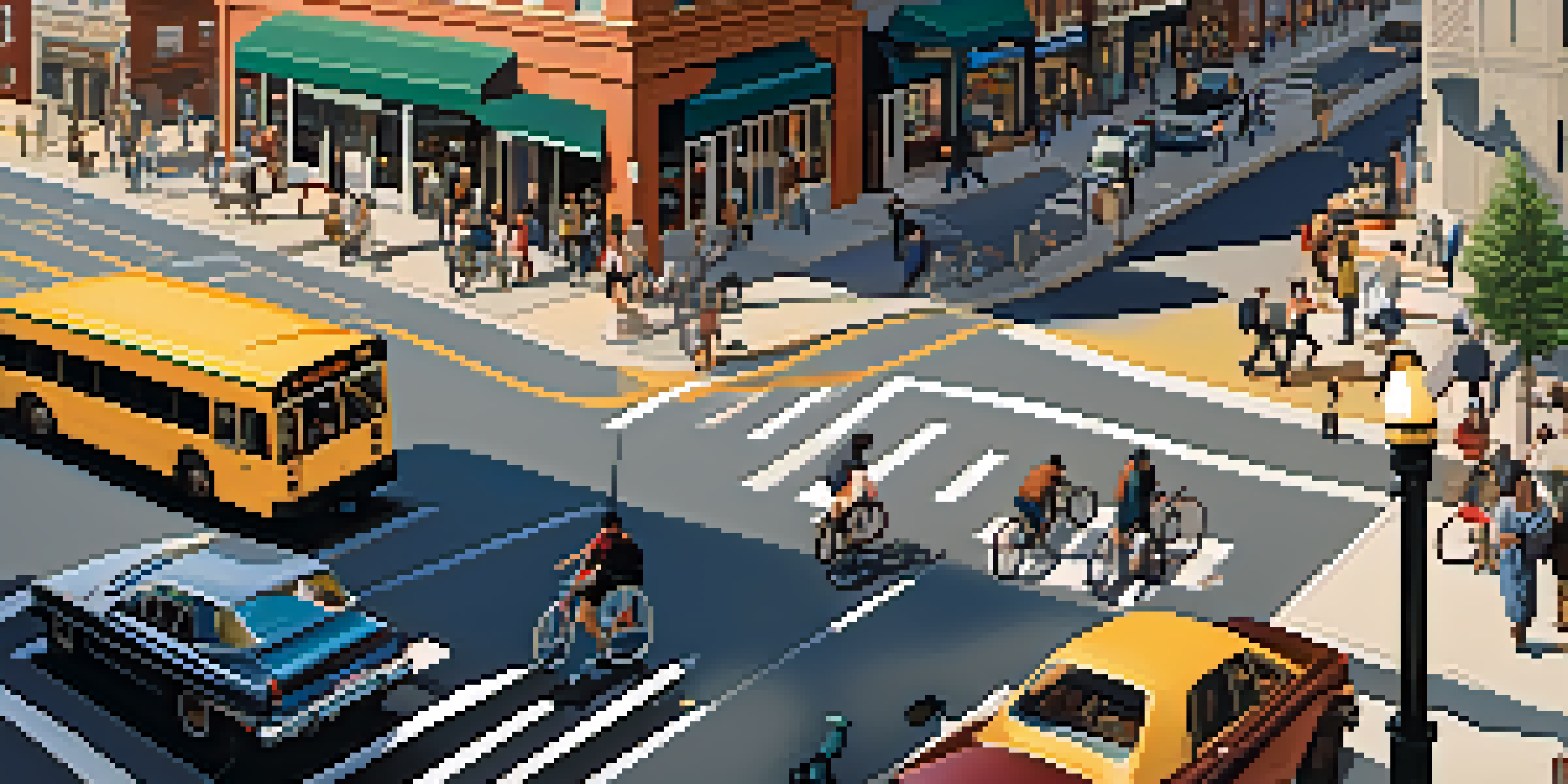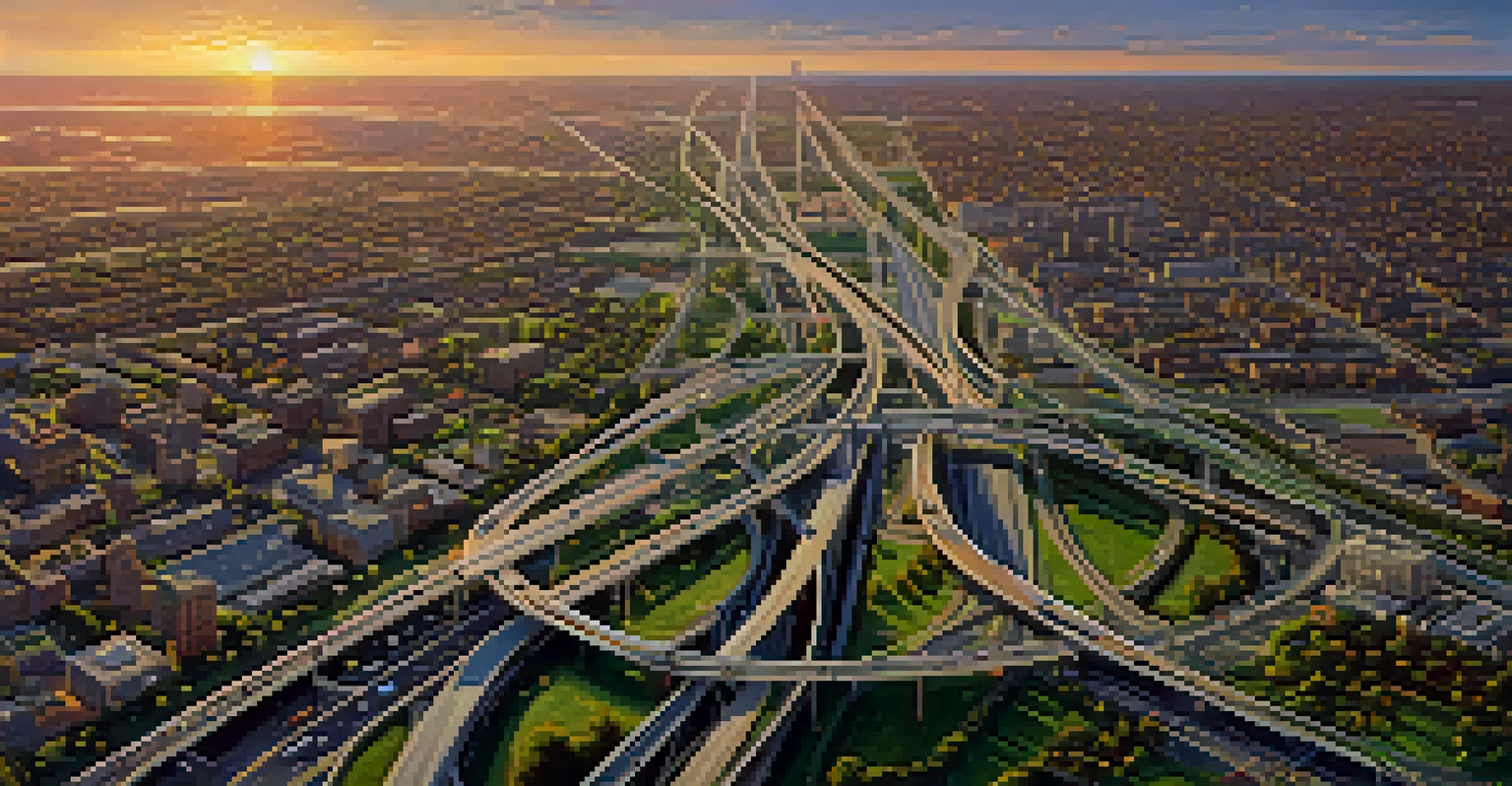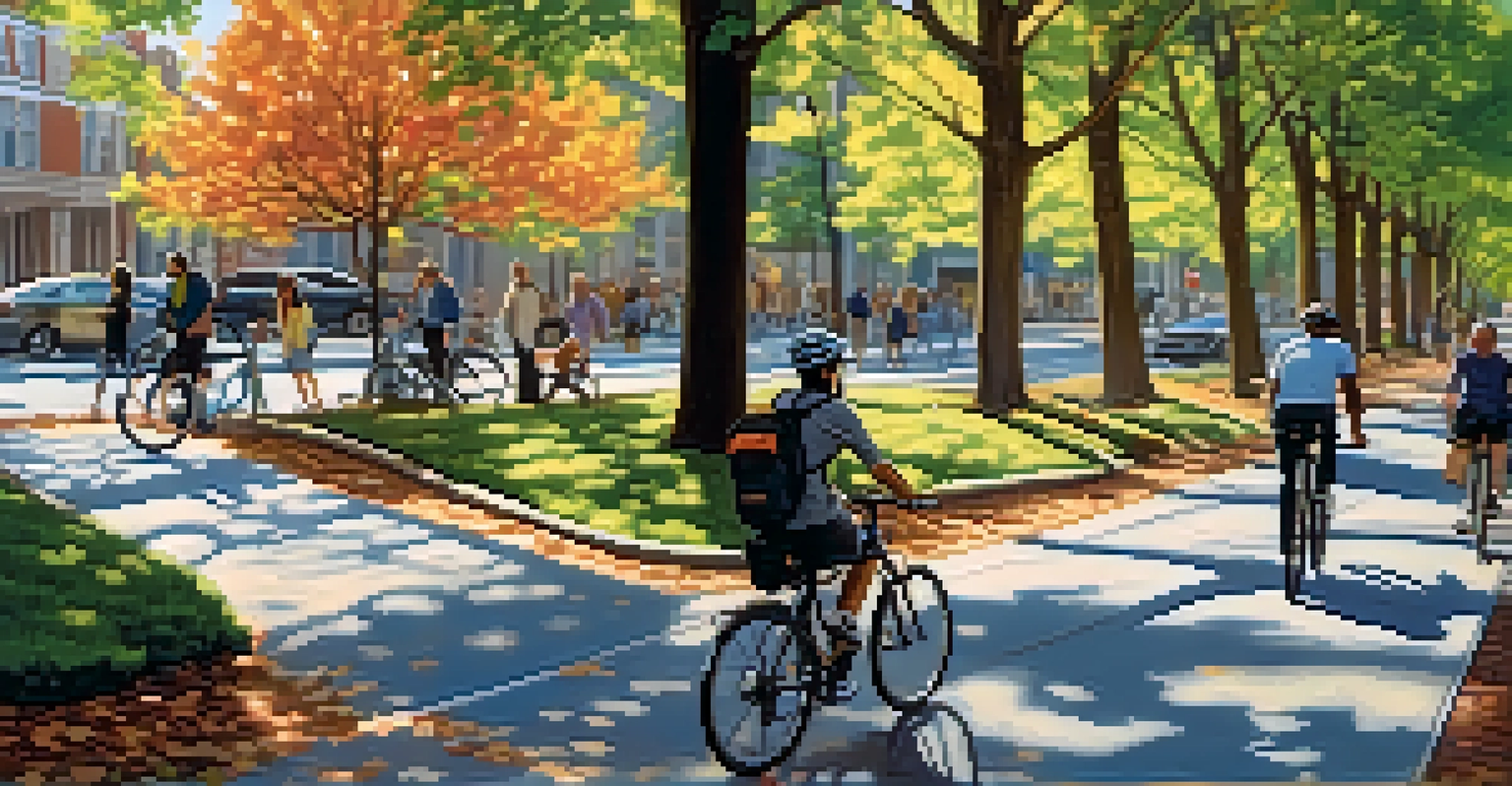Newark's Roadways: Traffic Patterns and Infrastructure Insights

Understanding Newark's Traffic Flow and Patterns
Newark's roadways are a complex web of streets that serve a diverse population. Traffic patterns in the city are influenced by various factors, including rush hour commutes, local events, and public transportation availability. During peak hours, major arteries like Broad Street and Market Street often experience congestion, which can add significant time to daily commutes.
The road to success is always under construction.
The city has taken proactive measures to analyze these traffic patterns. By utilizing traffic cameras and sensors, officials can monitor real-time conditions and adjust traffic signals accordingly. This data-driven approach helps not only in alleviating congestion but also in planning future road improvements to enhance overall traffic flow.
Understanding these patterns can help residents and visitors alike navigate the city more efficiently. By being aware of peak traffic times and alternative routes, drivers can save time and reduce frustration. It’s about finding the right balance between busy roadways and quieter back streets that can make all the difference.
Major Roadways: Lifelines of Newark's Transportation
Newark's major roadways, including the Garden State Parkway and I-280, serve as vital connections for commuters and freight traffic. These highways not only facilitate travel within the city but also link Newark to surrounding regions, making it an important hub for both business and leisure. This connectivity is crucial for the economic growth of the area.

These primary routes, however, come with their own set of challenges. Heavy traffic can lead to bottlenecks, especially during rush hours. Moreover, road maintenance and construction projects can cause detours and delays, impacting daily commuters and local businesses alike.
Traffic Patterns Impact Commuting
Understanding Newark's traffic patterns can help residents navigate the city more efficiently and avoid congestion.
For residents, understanding which roadways are prone to congestion can help in planning trips. Utilizing navigation apps to check traffic conditions before heading out can save time and provide alternative routes. It’s all about making informed choices to ease the daily grind of city travel.
Public Transportation: A Vital Component of Newark's Roads
Public transportation in Newark plays a significant role in managing traffic and reducing the number of vehicles on the road. With options like NJ Transit trains, buses, and the Light Rail, many residents rely on these services for their daily commutes. This not only alleviates road congestion but also promotes environmental sustainability by reducing carbon footprints.
Good infrastructure is the foundation of good transportation.
However, the public transit system is not without its challenges. Issues such as delays, overcrowding, and limited service hours can discourage potential users. Addressing these concerns is essential for increasing ridership and further easing traffic on Newark's streets.
By encouraging more people to use public transportation, Newark can continue to improve its traffic situation. Initiatives such as expanded service hours and better connectivity between transit options can create a more robust system, ultimately benefiting the city as a whole.
The Role of Infrastructure in Traffic Management
Infrastructure plays a crucial role in how traffic flows throughout Newark. Well-maintained roads, efficient traffic signals, and adequate signage all contribute to smoother commutes. The city has invested in upgrading its infrastructure to address issues caused by aging roads and increasing traffic volumes.
In addition to physical road improvements, Newark has also focused on implementing smart technology. This includes adaptive traffic signals that adjust in real-time based on traffic conditions. Such innovations not only enhance safety but also improve the overall efficiency of the roadway system.
Public Transit Reduces Road Congestion
Public transportation options are vital for reducing vehicle traffic and promoting sustainability in Newark.
As Newark continues to grow, ongoing infrastructure improvements will be essential. Investing in modern solutions can help accommodate the needs of a changing population and ensure that roadways remain effective for years to come.
Bicycle and Pedestrian Safety on Newark's Roads
As more people turn to biking and walking as alternative modes of transportation, ensuring their safety on Newark's roadways is paramount. The city has made strides in creating bike lanes and pedestrian-friendly areas, promoting a healthier and more sustainable way to navigate the city. These dedicated spaces not only enhance safety but also encourage more residents to choose non-motorized transit options.
However, challenges remain in balancing the needs of all road users. Increased bicycle traffic can sometimes lead to conflicts with vehicles, particularly on busy streets. Education and awareness campaigns are essential to foster a culture of respect among drivers, cyclists, and pedestrians alike.
By prioritizing the safety of cyclists and pedestrians, Newark can create a more inclusive transportation network. This not only enhances the quality of life for residents but also reduces dependence on cars, contributing to a more sustainable urban environment.
Future Developments: Planning for Newark's Traffic Needs
Looking ahead, Newark's city planners are focused on addressing future traffic needs through comprehensive development strategies. This includes evaluating existing roadways and identifying areas that require expansion or redesign. By anticipating growth and adapting infrastructure accordingly, Newark aims to create a more efficient transportation system.
Public involvement is a key aspect of this planning process. Community feedback helps shape decisions about which projects to prioritize and ensures that the transportation needs of residents are met. Engaging with the public fosters a sense of ownership and responsibility towards the city’s infrastructure.
Infrastructure Upgrades Are Essential
Investing in infrastructure improvements and smart technology is crucial for managing Newark's growing traffic needs.
As Newark continues to evolve, proactive planning will be essential. Balancing growth with sustainable practices will ensure that the city remains accessible and livable for all its residents.
Conclusion: Navigating Newark's Roadways with Insight
Navigating Newark's roadways can be a challenge, but understanding traffic patterns and infrastructure can make a significant difference. By being informed about peak traffic times, utilizing public transportation, and respecting all road users, residents can contribute to a smoother commuting experience. The city’s efforts to enhance its infrastructure and incorporate smart technology are paving the way for a more efficient transportation network.
As Newark continues to grow and evolve, the importance of community engagement in transportation planning cannot be overstated. Residents have valuable insights that can help shape the future of the city’s roadways. By fostering collaboration between officials and the community, Newark can create a transportation system that meets the needs of everyone.

In conclusion, whether you're driving, biking, or taking public transport, being aware of Newark's traffic landscape empowers you to make informed choices. Together, we can work towards a more efficient and enjoyable commuting experience in this vibrant city.